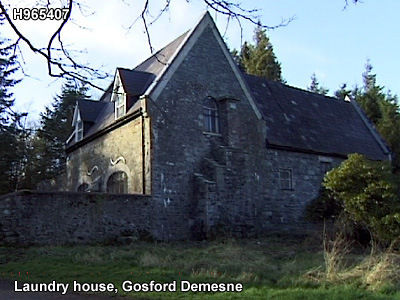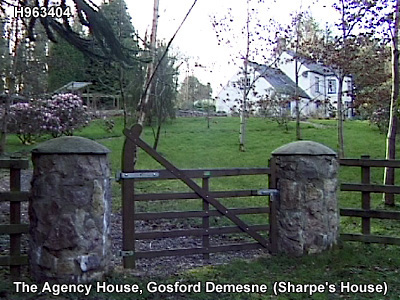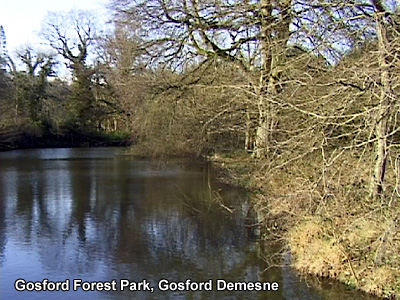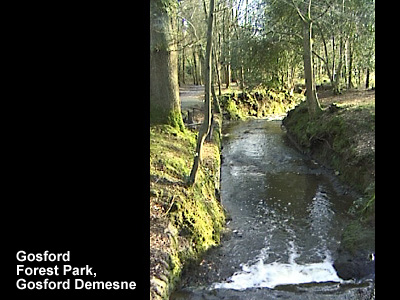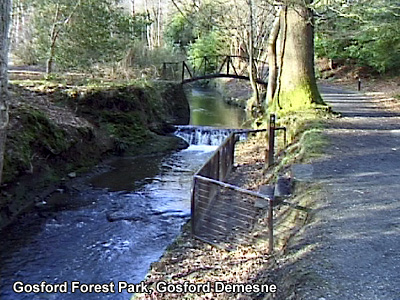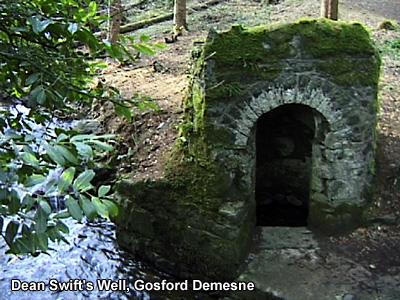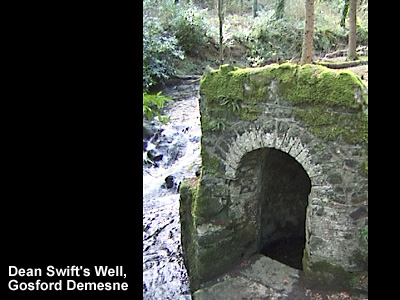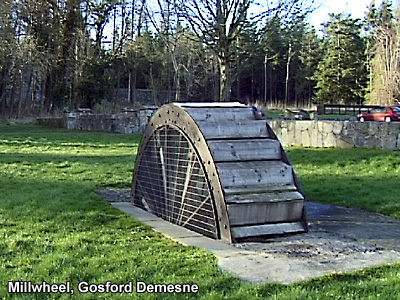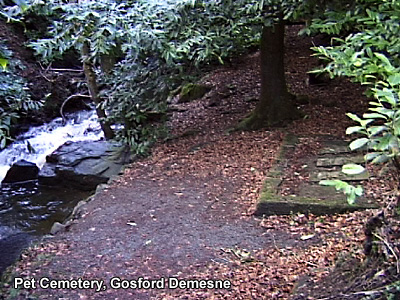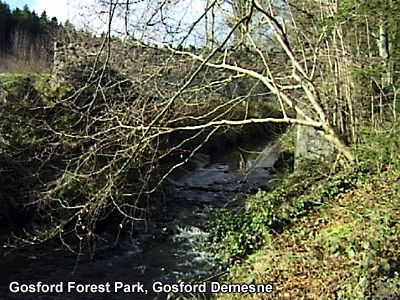
Gosford Estate was purchased by the Northern Ireland Ministry for Agriculture in 1958 and the six hundred and forty-two acres opened to the public as a Forest Park. Since then the park has attracted multitudes of visitors, enticed by the blend of wild forest and formal garden, buildings and wildlife.
ARBORETUM
Preservation of Gosford's natural heritage has always been a priority. The forest area is large and much has been cleared for use in the locality but care has always been taken to replenish the natural forest reserves. The soil in the area encourages the growth of conifers, which are regularly planted, cleared and replaced. The hardwood trees are also encouraged with regular planting of oak, beech, ash and sycamore trees. This process has been carried on with success at Gosford for over two hundred years.
During World War Two a large section of forest was removed for use by the garrison at the Castle. A further section was removed when the road bypassing the town of Markethill was constructed in 1967. These areas were not replaced but the Arboretum survived the wartime ravages and has been carefully preserved since. It covers an area of approximately 12 acres with many of the trees having reached heights in excess of one hundred feet.
CLONKEARNEY MANOR
In the late-seventeenth century, the Acheson family of Gosford Estate built a new manor house in which to entertain their society friends. This house burned down and subsequently replaced by the present Castle. The ruins of the manor are still apparent in the undergrowth beside the old laundry house, on the path to the ponds. The area nearby which is now a car park was once occupied with farm buildings forming the nucleus of the agricultural life of the Estate. The now stationary waterwheel near the ruins of the manor house was constructed at the same time as the manor and was in use until World War One.
THE PONDS
One of the more formal aspects of the Forest Park are the ornamental ponds to either side of a stone arch. During the seventeenth century, this archway was the entrance to the Estate and the main road passed close by this entrance.
At this time the ponds were known as the basins and their use was more practical than ornamental. They were used to power the waterwheel in the farmyard, which provided power for the agricultural needs of the Estate. The ponds are supplied by means of an underground mill race running from the river through the ponds and back into the river by means of an ornamental bridge.
DEAN SWIFT'S WELL AND CHAIR
The Lords and Ladies of Gosford were keen entertainers and enjoyed the company of numerous illustrious personages. Standing shoulder to shoulder with the Lords and their Ladies was none other than the celebrated author Jonathan Swift, author of Gullivers Travels. Swift first visited Gosford in 1728 and stayed for a duration of some months. He returned twice more but it would seem there was a cooling of the friendship and the author left Gosford in 1730 never to return.
Below the waterfall there is a path leading to a small well. Originally this well was known as Patrick's Well after the Saint of Armagh and it was said this well held a cure for all ills. Swift it would seem often walked here in the afternoon and watched the Estate workers going about their business. For this connection the well was renamed after the poet.
Another of Swift's haunts was an area in the southern section of the Arboretum. The chair was in fact a small semi-circular cut into a bank and surrounded by a yew tree. In fine weather, Swift frequented this spot and composed verse.
ANCIENT FORTS
For those with energy and inclination, a walk of almost three miles can be undertaken to examine the two ancient raths still inside the boundaries of Gosford Estate. A path leading up from the Castle forecourt will lead up a steep hill and eventually to Greer's Fort. This small rath has a circular rampart and ditch and a fine view of the Castle may be obtained from this vantage point.
Leading back down towards the Castle across a stone bridge takes a walker along the foot of Bryandrum Hill and into a small valley. Near this on higher ground is Crunaght Fort, which is now used as a picnic area.
REFERENCES
Bell, J, Markethill and Gosford History Trail (Markethill, 1993)
HMSO, Gosford Forest Park (Belfast, 1969)
In the accompanying recording, Jenny Maguire of the Forest Service talks about public and educational facilities in Gosford Forest Park.

Use the audio controller to listen to this talk, given in 2003.


